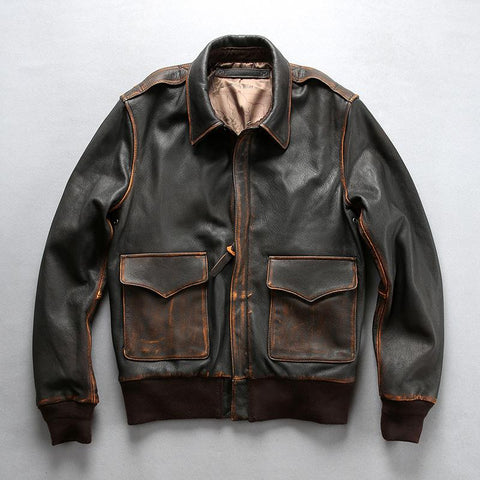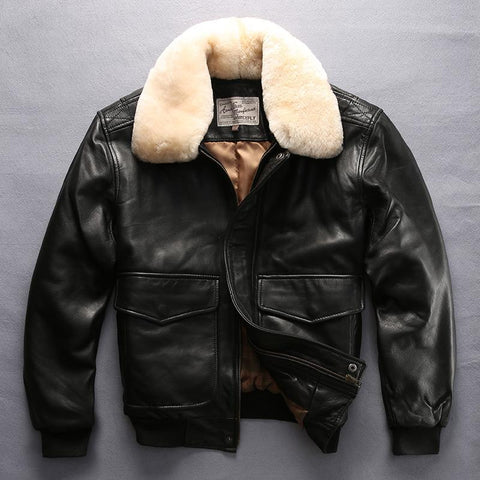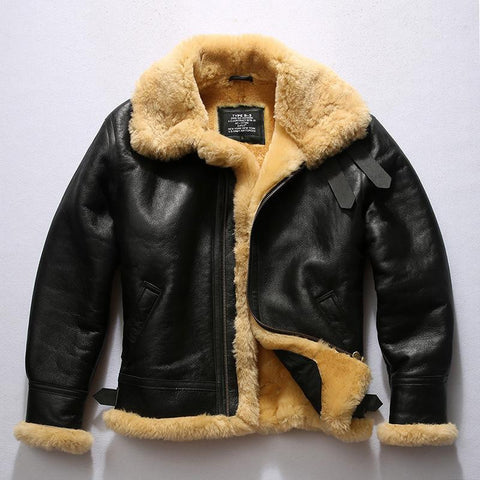
Winter Classic Jacket - Aviator Jacket's Trendy Centuries
Share
Many boys have a dream of joining the military when they are young, dreaming of being handsome in a capable military uniform. This is why military uniforms have become an irresistible part of almost all men's lives, and pilots are undoubtedly one of the most obsessed with military dreams, because in addition to military dreams, almost everyone has an innate dream of flying. The popularity of flight jackets as the status symbol of pilots is not only because of its windproofness and warmth, but also because of the spiritual taste it contains. And when military clothing meets pop culture, what kind of chemical reaction will it have?

The Aviator Jacket, as the name implies, is a jacket designed specifically for pilots. The history of the Aviator Jacket began in 1909 with a flying competition, and like the century of aviation, the Aviator Jacket has also gone through a century of development. With the continuous advancement of technology and innovation, flight jackets have been transformed into a series of classic styles, both in terms of material and design. With their practical function and fashionable design, flight jackets not only became popular in the military, but also quickly became a craze in the fashion industry and were highly sought after by fashion lovers. The jacket has become the favorite of the fashion world and can be seen in the designs of some of the biggest fashion brands.
After the 1920s, the United States attached great importance to the development of the air force. In the early days of the Wright brothers' invention of a practical aircraft that could be effectively controlled by people, the aircraft used open cockpits, and pilots flew the aircraft in order to achieve the purpose of wind protection and warmth in the air, so most of them used a style that reached the thighs and tied the waist, with a high lapel and lush fur, which was the pride of almost all pilots. This was the pride of almost all pilots, as men's clothing in those days was rarely designed with fur. Most of the flight coats in those days had more button tabs and the waist and collar were tieable, all designed to protect against the cold. The First World War promoted the development of aviation technology, and the flight suits of the participating countries in this period were similar in design, highlighting the warmth. Pilots serving in aircraft, hot air balloons, airships and high altitude camera units all had to contend with the cold.

After the 1920s, the United States attached great importance to the development of the air force. In the early days of the Wright brothers' invention of a practical aircraft that could be effectively controlled by people, the aircraft used open cockpits, and pilots flew the aircraft in order to achieve the purpose of wind protection and warmth in the air, so most of them used a style that reached the thighs and tied the waist, with a high lapel and lush fur, which was the pride of almost all pilots. This was the pride of almost all pilots, as men's clothing in those days was rarely designed with fur. Most of the flight coats in those days had more button tabs and the waist and collar were tieable, all designed to protect against the cold. The First World War promoted the development of aviation technology, and the flight suits of the participating countries in this period were similar in design, highlighting the warmth. Pilots serving in aircraft, hot air balloons, airships and high altitude camera units all had to contend with the cold.
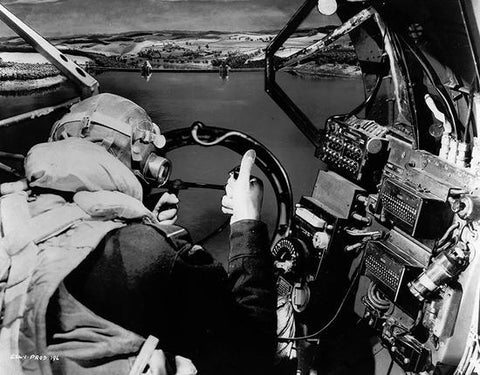
In 1917, in order to develop flight jackets and various aviation equipment, the United States set up a special committee on aviation clothing. At certain altitudes, heavy wool uniforms became damp and icy, and they became a fatal factor, so a good alternative was leather, which was both warm and water-permeable. So leather became the dominant material in flight clothing for the next 40 years.
At this time, the left and right collars of flight jackets could be closed by hook and loop, tightly wrapping around the collar where the wind was most likely to enter in an open cabin. After World War I, a new type of pilot's jacket was created, shorter in length and made of elastic knitted fabric at the cuffs and collar, the A-1 pilot's jacket was introduced in 1927.
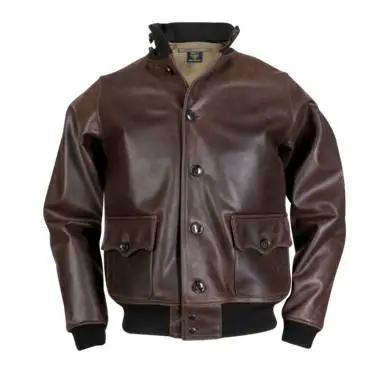
A-1 Aviator Jacket
A2 Aviator Jacket appeared in the 1930s, the A2 is an upgraded version of the A1 Flight Jacket's original aviator jacket with an improved zipper design, making the A2 more convenient to put on and take off quickly. The A2 Flight Jacket was made of horsehide, which was decided by the U.S. Congress during the economic crisis and World War II, when supplies were scarce and the jacket was a military item. It won the hearts of pilots with its simple and durable appearance and practical effect. The first thing new pilots did, especially after receiving their cotton flight jackets, was to buy an A2 Flight Jacket at their own expense to get rid of their rookie title and show off their identity as a pilot.
G1 Aviator Jacket was first designed and put into use by the U.S. Navy in the 1930s, and was jointly named ANJ-3 (Army Navy Jacket 3) by the Navy and Air Force in 1943 to replace the classic A2. Here the ANJ-3 is named relative to the A-2, and can be interpreted as a continuation of the A2
Since the biggest difference between A2 and G1 is the fur collar, G1 can also be seen as an upgraded version of A2 with a fur collar. 1934 saw the introduction of the B-3 flight jacket, the B-type being the code name for a winter jacket with a more frost-resistant wool texture inside.
The "shearling" that is often referred to today is actually a process in which the best lambswool skins are selected to protect the body temperature of soldiers in harsh environments, and this process is called "shearling", which makes full use of the warmth of wool itself. Leslie Irvin was the first designer and manufacturer of the classic Shearling Jacket and went on to become the main supplier of flight suits to the Royal Air Force during World War II. Leslie Irvin was the first designer and manufacturer of the classic Shearling Jacket and went on to become a major supplier of flight suits to the RAF during World War II.
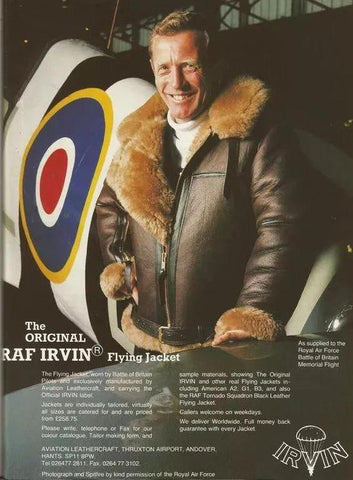
Zippers and metal buckles are corrosion-resistant treatment, leather jacket articulation increased cowhide stitching, countless times of fierce combat are a harsh test of B-3 durability, wool lapels on the straps are designed to preserve the temperature of the neck, the body on both sides of the belt buckle has a dual role of wind and heat, due to the unique operational needs of the Air Force, the dress code advantages of the B-3 bomber jacket highlights, after the war with those classic screen hero image, shearling jacket is like a strong dose of hormone, so that masculinity unreservedly embodied.
In 1944 the U.S. Army Air Corps began to select the B-15 pilot's jacket as the jet's custom flight suit. The second generation of the B-15 began using high-strength nylon fabric due to a shortage of leather supply. And after the war, sex goddess Marilyn Monroe wore a B-15 to console American soldiers.
The B-15 is lighter than earlier leather jackets, with better wind and water resistance, and a faux fur collar to prevent skin irritation on the pilot's neck. Details of the design include two additional hanging buckles that are used to hang oxygen masks and radio equipment. Its slanted top pocket, pen pocket on the left sleeve, and contracted cuffs and hem became the yardstick for subsequent flight jackets when they were designed and manufactured The development of the American flight jacket was largely mature and continues to this day.
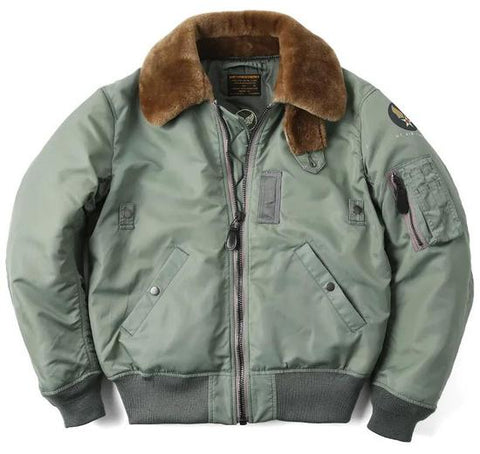
B-15 pilot's jacket
On September 18, 1947, the U.S. Air Force became independent from the Army, first from the original yellow-green to Air Force blue, the material also changed to nylon and widely used B-15 nylon jacket.
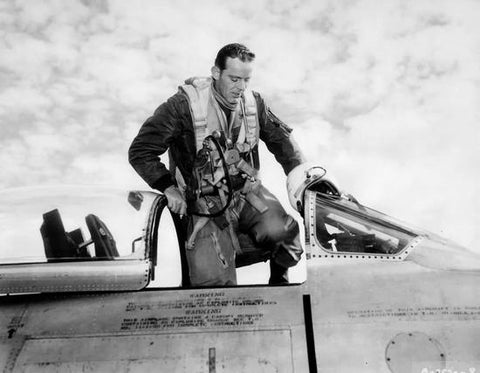
The MA-1 flight jacket was made official by the U.S. Air Force and Navy in 1949. The 66 flight nylon developed by DuPont during this time was made into the MA-1 pilot jacket. two other major improvements to the MA-1 were the elimination of the shearling collar and the use of a high-visibility orange lining. The jacket had a combination pocket on the left arm that could hold more than two pens, as the pilot would use different colored pens to mark different locations on the drawing. To this day, this one practical design is still retained by many flight suits and trendy items.
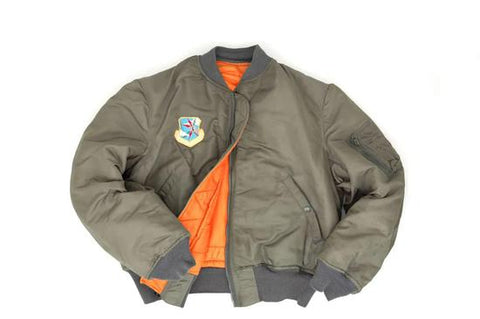
MA-1 flight jacket
The MA-1 was developed from the B-15, using high-strength nylon material from the fabric to the lining. In early models, two layers of nylon were sandwiched between two layers of wool for warmth, and the original wool sandwich was replaced by a newly developed polyester lining. the MA-1 was lighter in mass and had a polyester lining for greater warmth. the MA-1 abandoned the soft sheepskin collar because it prevented the pilot from carrying parachute straps. the MA-1 was perhaps the most popular flight suit of all time. It was designed to be worn both forward and backward, with an orange nylon lining that made it easy to search for friendly troops after a crash, and was widely used in the Korean and Vietnam wars. The U.S. Army's flight jacket has been developed over the decades and was fully matured in the 1950s period. It was even a big hit in the mass market and is still active in the front line of the trend.
When the movie "The Memphis Belle" was released in 1990, wearing a pilot's jacket in combat was probably the reason why many boys wanted to join the army. Many movies and TV shows have always shown that a stylish jacket is not only necessary to fight, but also to ignite a trend! Fashion players are willing to "invest" in a shearling jacket, and contemporary designers are happy to paint the silhouette of the "Shearling Jacket" in its new form. Wear it and you too can have the feeling of taming the sky!

